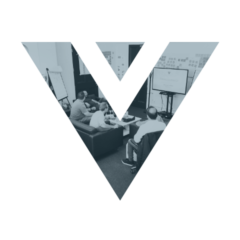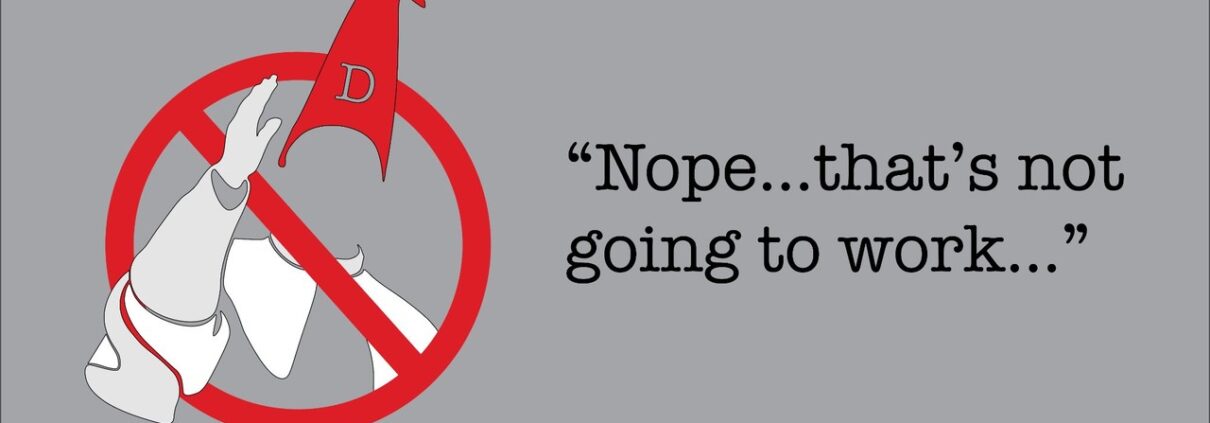Back on the Rollercoaster Part 2.5: The sales pitch
In the last post, I deleted any attempt to explain why we think we are different and rationalise why a customer should grace us with their business. Whilst this isn’t an out and out sales pitch – it might even be more a plea for help – I’ve put together our collective thoughts on why we do what we do.
As a team, we have decided that we should find four words that symbolise us.
Why four? I have absolutely no idea. Maybe it’s because there are four founders and we think we are super heroes akin to the Fantastic Four – that would mean I’m either Mr Fantastic or more likely, The Thing.
Anyway, it is four at the moment, and we are struggling to find the exact right words for what we want to convey. Any suggestions are most welcome and who knows, there might be prizes.
Word 1: Belief
The word does lead one to thinking of images of the Pope or assuming that we are a religious cult so it probably needs to be finessed. With this word, we are trying to explain how we are with each other, our customers and the projects we work on.
The foundation of our business is the trust and belief in each other, which enabled us to form the company in the first place. We are totally reliant on each other to succeed as we all have distinct roles to play. Each member who joins the team enhances us and joins that circle of trust. This is essential – we are a start-up where there can be no passengers and we all play an integral part in our future.
We take that same conviction to our engagement with customers. We are looking to work on projects and with people that we believe in. The ambition of our company is to be a contributor to great new business models. We want to enable success – to do this, we need to really engage with the objectives of our customer and want to celebrate their success.
Our aim isn’t to have hundreds of customers – it is to have much fewer who we enable the success of. We want to grow based on the success of our customers, so identifying with and contributing to their business goals is essential. That means that our customers need to believe in more than our capabilties and we need to believe in more than their ambitions.
It isn’t easy for everything to be aligned but it’s what we strive for. Obviously if we can’t manage it, we could become a religious cult as that does seem to be a profitable business model. Its always nice to have a plan B.
Word 2: Simple
Again, this is probably the wrong word – you are probably thinking of someone with a dunces cap on. Mix in the word belief and you have an image of the Pope with a dunces cap on. Whilst that imagery may lead to an interesting topical debate in other circles, its not what we’re going for here and no offence is intended.
What it is actually meant to convey is that we don’t believe in making things unnecessarily complicated.
When we work with a customer to identify what to build, we are always focussed on making sure that what is finally agreed upon is tied to the business plan and isn’t simply added because it would be nice to have. It’s strange but when people think of building a new system or application they start adding all of their favourite features from other apps they have used. If you let it spiral out of control, you end up with really bizarre outcomes, e.g. an app that originally was being built as a market place for cars is now also an app that can turn on your wifi enabled washing machine.
History is littered with overly specc’d IT failures where the system takes too long to build so it’s out of date by the time it launches. It goes grossly over budget and it doesn’t really work. If you are unfamiliar with these failures, just google some of the IT procurements attempted by many including the British Civil Service that have ended in disaster. https://en.wikipedia.org/wiki/List_of_failed_and_overbudget_custom_software_projects
Keeping it simple and focussed means that you can get your product out quickly and you can check that it does solve the problem it was intended to. This means you don’t waste money and time unnecessarily. If you want the nice to haves, we can add them after you know people want your product. This is our adherence to lean. Don’t get me wrong – we like building cutting edge and complex products but we want to ensure that they are delivered efficiently so they aren’t out of date by the time they are launched.
For us, keeping it simple also signifies how we think about writing software. There are many good developers who can build your programme or application and produce it in thousands of lines of code. Our team are, and are continuously aspiring to be, great developers who can write that same application in hundreds of lines of code, as opposed to thousands. The reason for this is if you can build it that efficiently, it means that it is more stable, less likely to go wrong and is easier to fix, maintain and modify.
Word 3: Risk
As with all of our badly chosen words, it doesn’t mean that choosing us would be a risk – that would probably make this one of the worst branding attempts ever. The word here needs to signify three elements;
1) We are willing to put our money where our mouth is. By this, I mean that when the circumstances are right for both us and the customer, we are willing to take some or all of our fee in equity or profit share, or something similar. This circles back to the belief part: We genuinely want to facilitate great businesses.
2) We build and contract in elements rather than impose a huge system build. Firstly, we have a number of gateways that help the customer validate that what they want us to build is what the market wants. Secondly we will ideally contract in an agile way so that if the project isn’t working (e.g. a competitor to our customer brings out something devastating to the market) we will have a way of terminating the engagement easily. Why we do this is our confidence or belief as we really believe in what we do.
3) Permission to fail – This is an often used term but it is important to understand as you can only really do something different through trial and error. If we want to build cutting edge products, we need to give our team the time to invest in experimentation. That is our risk – as I said, our money is where our mouth is.
Word 4: Digital?
My thoughts on the phrase Digital Transformation will need to be cordoned off from this post and will be published in a later episode so this doesn’t become a rant. Don’t get me wrong – we do do that digital thing but it doesn’t mean it is always the answer.
As described in The Rollercoaster Part 1, Elemental Concept as a name came from us looking at what the fundamental premise of the business solution is. When we engage with a customer, we spend a considerable amount of time understanding their business. We like to get to know the value chain and think about how similar problems are solved in adjacent industries. Sometimes the right answer is operational/organisational; sometimes the customer is solving the problem well but using the wrong channels to market.
Why we do the technology thing is we believe that it will enhance nearly every industry. Digital will have a part to play in the advances seen across the board. Unquestionably, a lot of problems can be solved by technology and we have a great team that enjoy building those solutions. However, if we are to be true to our name, we have to advise when technology isn’t the answer (maybe not now, or maybe not ever).
So those are our Fantastic Four words. As you can tell, they need some work, but hopefully the message is understood. This is an opportunity for us to explain ourselves so any help in this would be appreciated.



